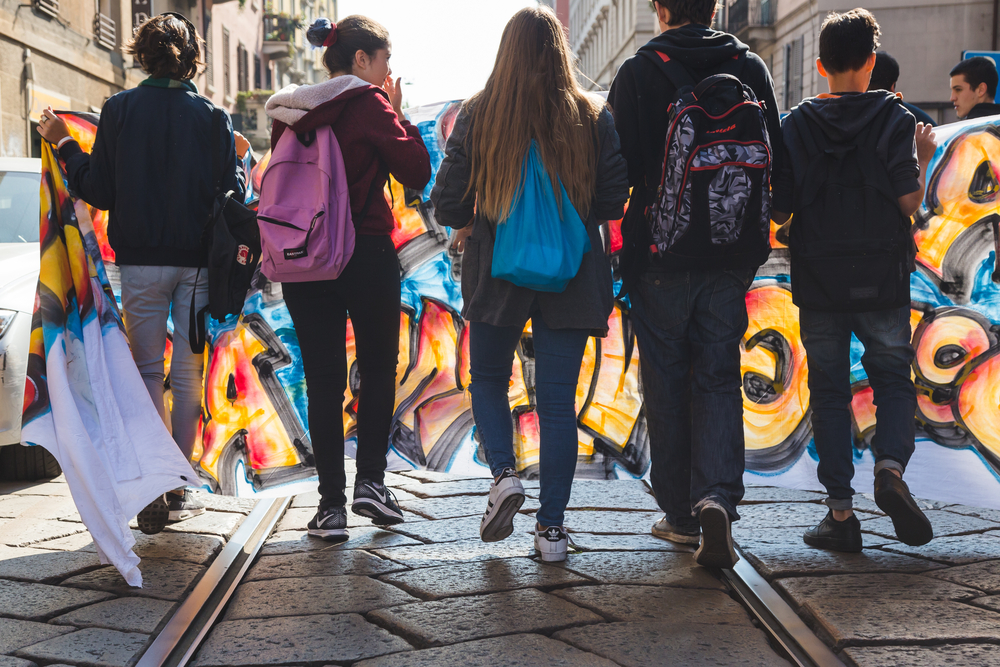Student Activism
Principals and school leaders are often tasked with striking a balance between carrying out their responsibilities to monitor and protect students from harm, while supporting them to express their voices as active citizens of their community in creative ways.
While student activism is not a new concept, the extensive and detailed media coverage of recent student protests demonstrates the high level of public interest that there appears to be in relation to school students protesting, and the schools that those students attend.
It was evident that in the November student protests, many school students were inspired by the actions of 15-year-old Swedish pupil Greta Thunberg’s protest in Stockholm, and students from many other countries followed suit.
On Friday 30 November 2018, over 15,000 students from all over the nation stepped out of the classroom to protest against climate change inaction. Both primary and secondary school students from Melbourne, Sydney, Brisbane, Perth, Coffs Harbour, Bendigo and other cities went on strike, demanding that the Australian government show leadership and implement immediate and effective climate change policy.
Given that some students’ schools could be identified, through the students being quoted in the press and by their choosing to wear their school uniform, and that the protests occurred during school hours, principals and school leaders were left with difficult decisions to make.
When asked why the recent November protests needed to happen during school hours, students emphasised how much they valued their education and their belief that by taking time out of school, politicians would be more likely to listen to their plight and take action. "The politicians aren't listening to us when we try to ask nicely for what we want and for what we need," said Castlemaine student Harriet O'Shea Carre. "So now we have to go to extreme lengths and miss out on school."
According to The Guardian, in response to the student protest, during question time, the Prime Minister replied that climate change was “a very real and serious issue” but that “kids should go to school”. “We don’t support our schools being turned into parliaments,” he said. “What we want is more learning in schools and less activism.”
The protests were organised by a group called School Strike 4 Climate Action. The organisers are scheduling their next action for another school day, on Friday, 15 March 2019. What do these strikes mean for schools in terms of their duty of care, and how can they prepare?
A School’s Duty of Care
It is well known that educators are required to exhibit the highest possible duty of care towards their students, and it is continually emphasised in legal and policy publications. The key components of a duty of care relationship always come down to the obligation to protect students from harm, whether it be physical or psychological harm, as far as is reasonably foreseeable. It is also clear that this duty of care can extend after school hours as discussed in our previous article. A school’s duty of care is taken to exist where a “student-teacher” or “student-school” relationship is established.
Potential Risks
Some of the potential risks to a school or their students from public student protests are:
- risk to safety - crowds of people always pose a risk of injury, particularly if some members of the crowd are unruly
- non-attendance at school -the potential for students to miss out on class time which could impact completion of classwork and homework and possibly their grades
- reputation risk - understanding how to respond to the media and ensuring that students’ parents or the students themselves have given their consent to be photographed or interviewed.
The Victorian Law Handbook maintains that community campaigns need to be planned and structured. The key to controlling any risks relating to public rallies or protests is preparation and community engagement.
Schools’ Response
The National Association for Secondary School Principals (NASSP) a leading organisation for secondary school principals based in the United States, shares some key considerations with respect to keeping students as safe as possible with the least disruption, while facilitating their participation in the community. NASSP’s recommendations are to:
- keep students safe
- recommend alternatives
- clarify consequences
- stay neutral
- manage media attention
- attend to students who remain.
Recommending alternatives and clarifying consequences can ensure that students are made aware of other approaches. However, underlying any recommendations is a common-sense approach for schools to practise open and honest communication with students in order to provide the opportunity to offer a compromise. It is also essential to remember that schools are able to advise that they support students’ civil rights, and this may include the right to engage in peaceful protests.
If students do choose to proceed with these protests there are ways that schools can seek to manage their response and uphold the duty of care owed to their students.
Click here to read Part Two of this two-part series.


